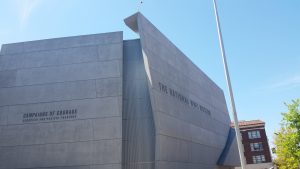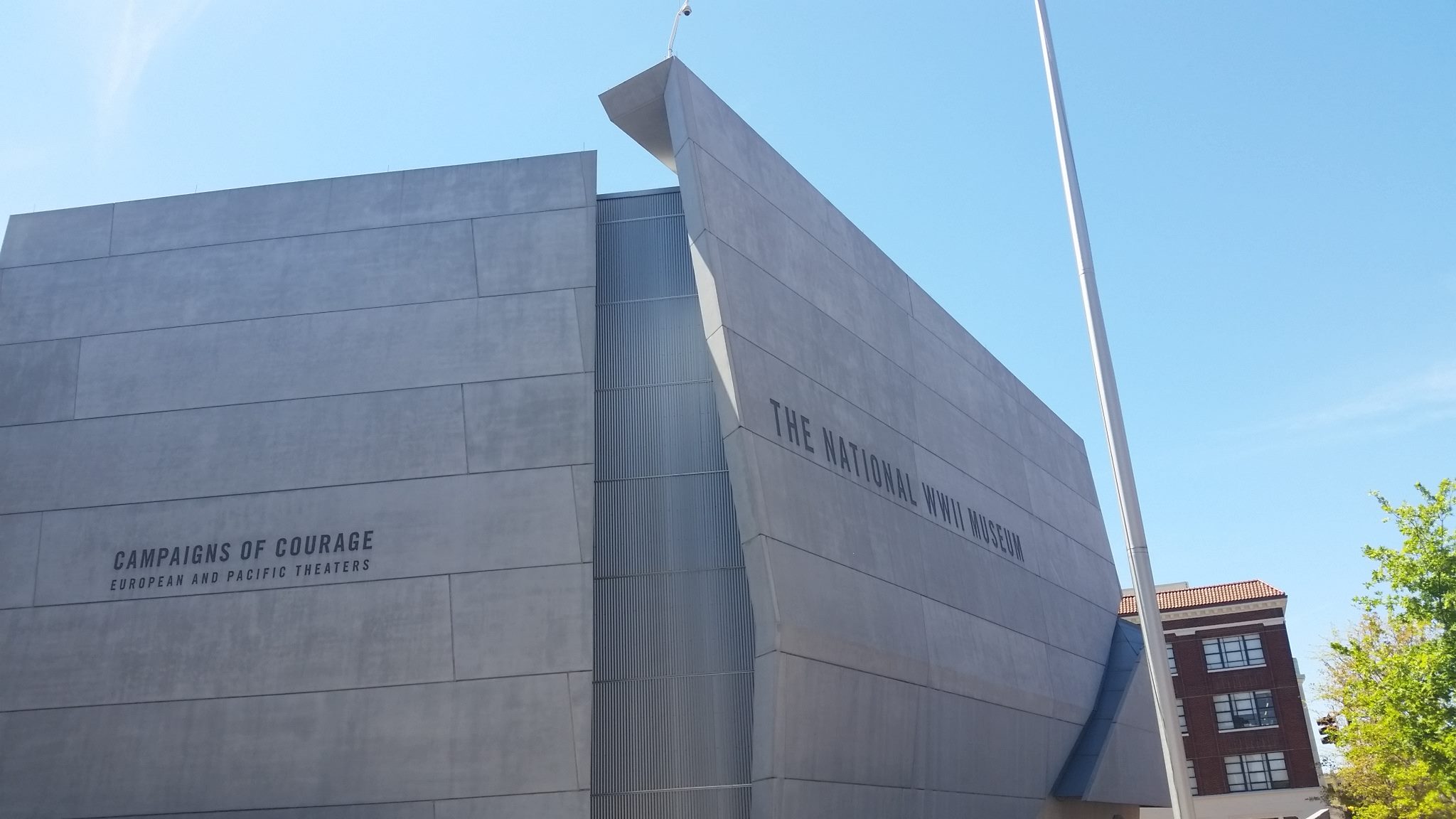 Heather and Bryan had the pleasure of traveling to New Orleans, Louisiana for a week in the spring of 2019. As with any good history nerds, much of their trip was devoted to seeing the unique historical sights of the lower Mississippi. This is the second installment in a series on their experiences of how the many facets of New Orleans history are interpreted for the public.
Heather and Bryan had the pleasure of traveling to New Orleans, Louisiana for a week in the spring of 2019. As with any good history nerds, much of their trip was devoted to seeing the unique historical sights of the lower Mississippi. This is the second installment in a series on their experiences of how the many facets of New Orleans history are interpreted for the public.
If you happen to travel to New Orleans, you cannot miss the fact that the city is home to the National World War II Museum. The universe simply will not let you. From signs in the airport to billboards along the highway to targeted internet ads once the Facebook algorithms figure out you’re in New Orleans or planning to go, you are inundated with publicity for the museum that is proudly described as “TripAdvisor’s #2 Museum in the World, and the #1 destination in New Orleans.” Heather and I hardly needed this much convincing; we had already pre-ordered our tickets weeks before we landed, and on the third day of our trip, we drove up to the museum campus to see what all the fuss was about.
The National World War II Museum is massive. It comprises four buildings, three gift shops (by our count; there may have been more), two restaurants, and a dedicated parking garage (with an attached hotel/conference center under construction at the time of our visit). The choice of location for such a museum may seem rather incongruous; wouldn’t San Diego, Honolulu, or just Washington, DC be more natural places for such an endeavor to spring up? This is in fact one of the first questions the museums answers: the renowned Stephen Ambrose, while a professor at the University of New Orleans, proposed starting a D-Day Museum that focused on both the events of June 1944 and the famous amphibious Higgins boats, which had been manufactured in New Orleans. This modest effort soon evolved into the ambitious project we visited, comprising exhibits on the mobilization of the American homefront for war, D-Day, the European Theater, the Pacific Theater, Medal of Honor winners, and scientific ingenuity during the war.
From the moment we stepped inside, I could tell why the public adores this museum. From original planes and vehicles suspended from the ceilings to a room devoted to the battle of Guadalcanal that put you in the middle of a South Pacific jungle, the National World War II Museum is the pinnacle of that kind of immersive, theme park interpretation that makes a visitor feel like they can reach out and touch the history they’re learning. With plentiful videos and easy-to-read sign text, the museum very effectively related the stories of the Second World War to its visitors.
All this being said, I began to be disappointed and even slightly discomfited the more I wound through the museum’s exhibits. To start, I got the feeling that there wasn’t much cutting edge scholarship being incorporated into the museum’s interpretation. It was inviting and modern and flashy at times, but at its heart, the museum was still telling the usual military historical narrative so beloved by World War II history buffs. Indeed, the museum seemed reticent to go beyond the strictest interpretation of its titular scope. While it admirably touched on the enlistment of multiple minorities, any further coverage of those minorities’ post-war experiences was nonexistent. Indeed, the museum’s narrative ended abruptly with the dropping of the atomic bombs and Japan’s surrender; no mention was made of Europe’s recovery, the opening stages of the Cold War, or the possible implications of World War II in any number of historical trends such as decolonization. Even opportunities for wrestling with the complicated nature of America’s participation in the war itself were brushed over or ignored. One room did deal with Japanese internment, but the larger exhibit treated it as just one, minor, facet in the war at home, with double the space devoted to industrial mobilization. The atomic bomb, too, got the smoothed over treatment; if your only experience was this museum, you wouldn’t know that there was any kind of debate over the morality or necessity of dropping the bombs at all.
Ultimately, while the National World War II Museum does a spectacular job of educating its visitors, it fails at perhaps the most important job of interpretation: leaving the public thinking about history long after they leave. If you knew nothing about the Second World War, this museum will teach you about it; if you knew some history already, it will give you the opportunity to nod along sagely as your knowledge is confirmed. No one will step in to challenge your preconceptions or demonstrate the complex, unknowability of history. If you leave its halls pondering what you just read, it will most likely be because of a topic’s absence from the museum, not its presence (I will be hunting down books on the war’s impact on Pacific Islander populations in the near future; stay tuned for some reviews). While this may lead to a happy, 5-star-reviewing public, it doesn’t do much to advance our collective understanding and processing of the period. Is the National World War II Museum a superb educational resource? Certainly. Is it worth a day of your time in New Orleans to visit? Absolutely. Is it the second best museum in the world? Not even close.

One reply on “Interpreting the Big Easy: To Complicate or not to Complicate?”
I suppose it was too much to expect a museum originating with Ambrose to include much original research.